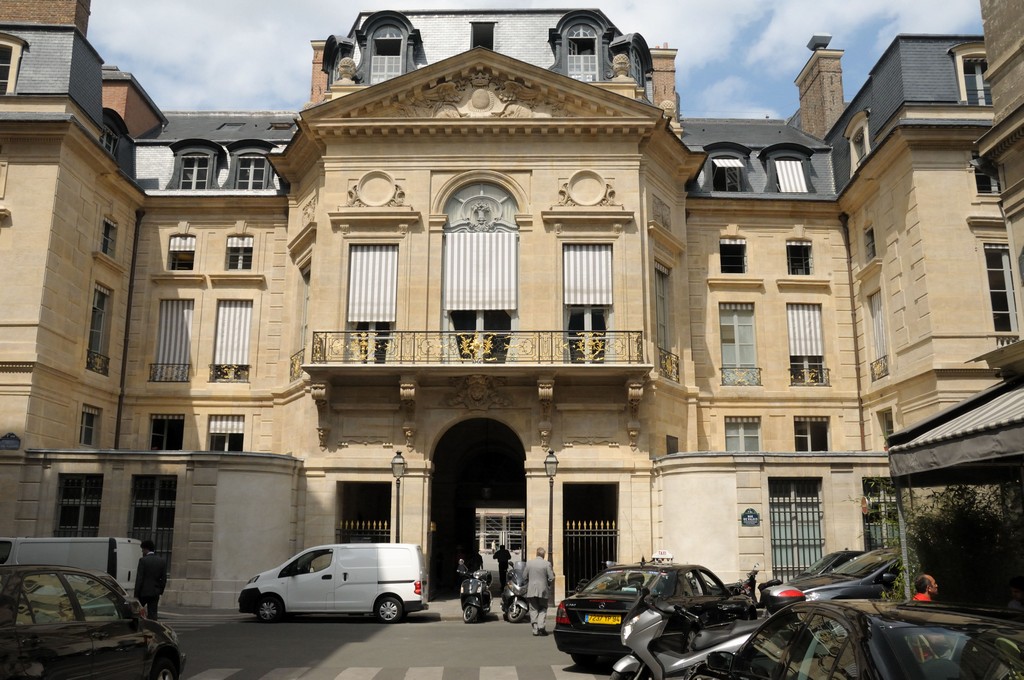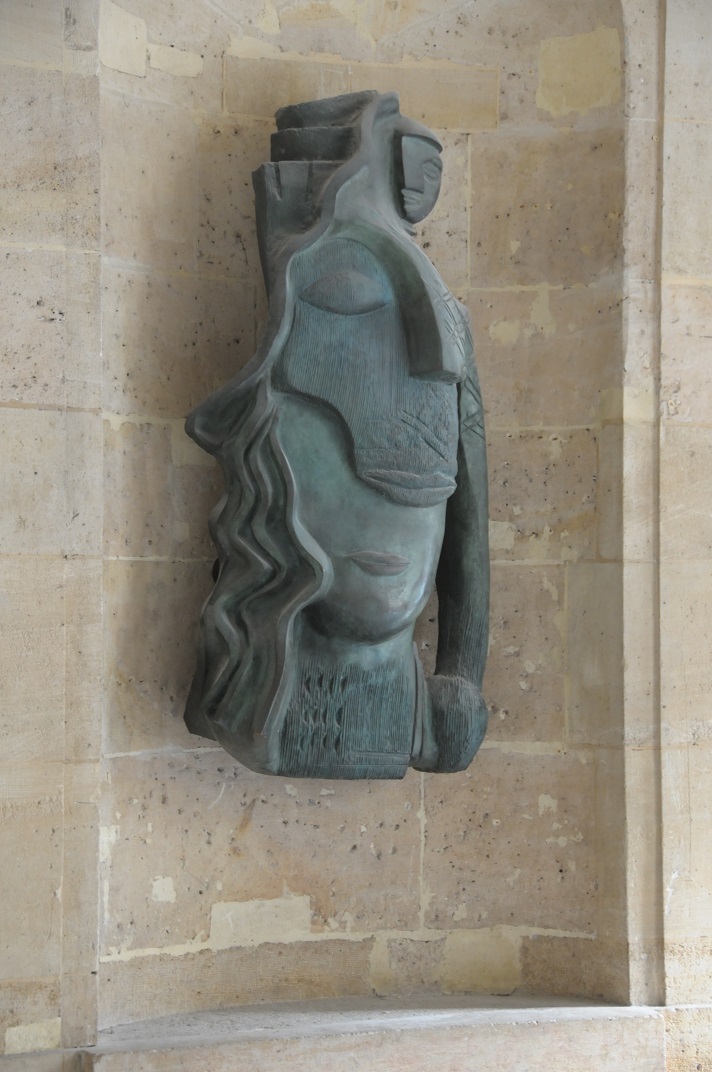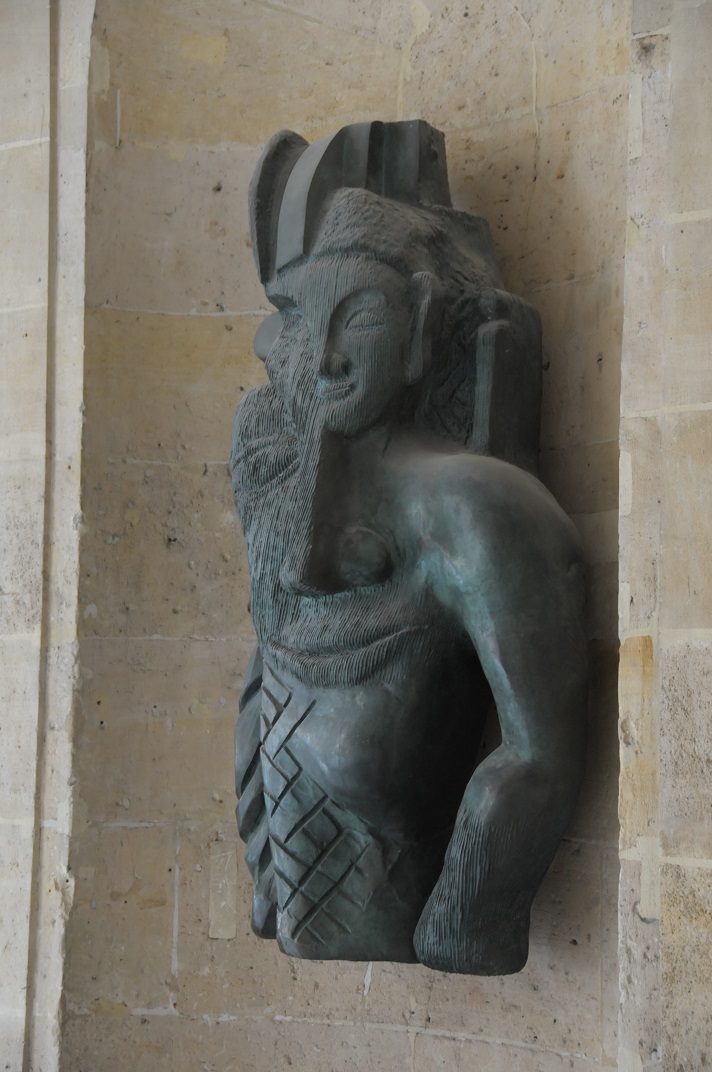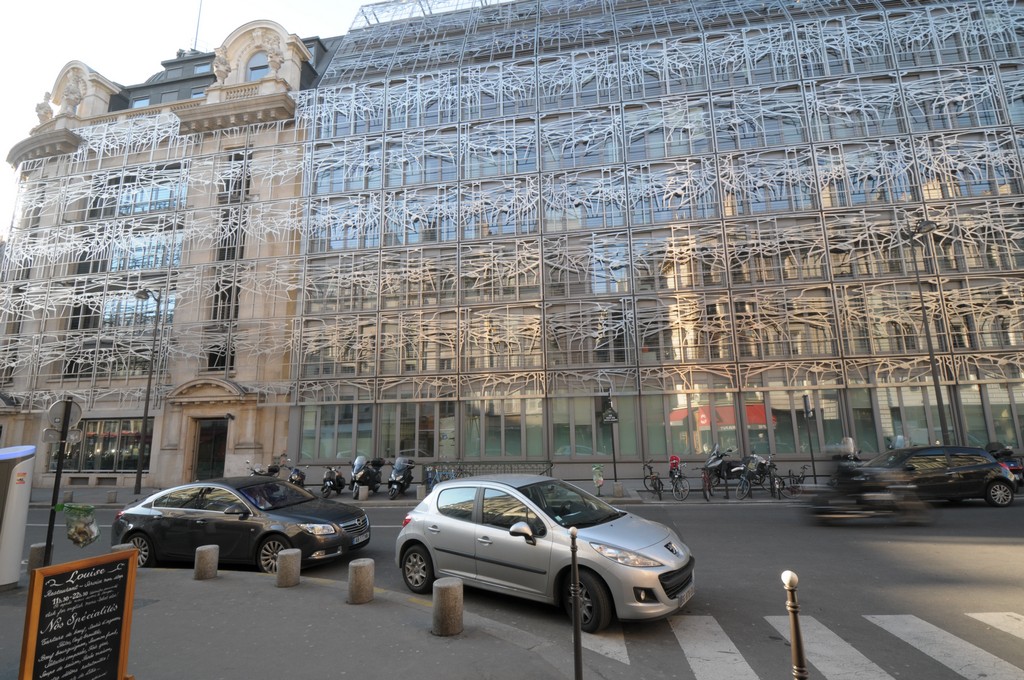
The facade on the rue de Valois.
© Antonio Ca' Zorzi (2011)
The Facade on the Rue de Valois
Alberola: Tribute to Malraux

Jean-Michel Alberola, Et après?, Woman (detail), 1992

Jean-Michel Aberola, Et après?, Man (detail), 1992
In the Passage des Fontaines, which connects the Courtyard to rue de Valois, we discover on the walls two bronze sculptures by artist Jean-Michel Alberola on the walls - two torsos, both cubic and fantastic, face each other like in a kind of a cultural collage. They assemble Indian, African, Greek and pre-Columbian fragments and are a tribute to André Malraux, writer and first minister of Culture during the 1960s.
Exit the passage of Fountains towards rue de Valois
It is probably in this wing of the Palais-Royal, on the rue de Valois, that the apartments of the future King Louis XIV, of his brother Philippe d'Orleans and of the Queen Mother, regent Anne of Austria were located. The facade is marked by a crown, probably reconstructed by the architect Contant d'Ivry, and the balconies in iron wrought, designed by Etienne de Nevers, which decorated at one time the entire length of the facade. The balconies are decorated with golden letters, "A" and "L", initials of the Regent queen and future King.
The Fronde (insurrection)
It is through this passage that Parisians invaded the Palace during the Fronde. In 1648, Anne of Austria along with Cardinal Mazarin who was disliked by the Court and by the Parisians, modified the "Paulette", the annual tax paid to the Treasury for the offices or for titles of nobility. This reform, together with other tax measures, intended to meet the expenses of the State during the Thirty Years War, was rejected by the Parliament, where the opposition was led by the popular Pierre Broussel. The day of his arrest ordered by Anne of Austria, all Paris took to the street and barricades were erected around the Palais-Royal to demand his liberation, which was granted immediately. On the night of 9 to 10 February 1651, the Palais-Royal was invaded by unhappy crowds which requested from the Queen a meeting with the young King. She led the crowd to see a sleeping child. The "King of France" was only twelve years old. Without doubt, it was this experience that led Louis XIV, once in power, to build Versailles, far away from the people of Paris.


